ALL NEWS :
Should sealing be only designed considering material and geometry?
08/03/2015 - posté dans Experience
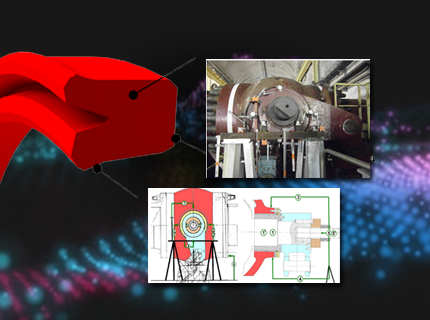
Introduction
Further to several customer experiences, we noticed that it is critical to work on both seal and housing parameters.
This new way of considering projects is based on a specific experience: the replacement of a valve trunnion.
The equipment working conditions caused big housing strains and could create sealing failures due to the seal tensile stress.
Some questions came up from this case:
- Should we only consider the seal material and geometry?
- Should we act on the housing to optimize the sealing?
We experienced a case of seal housing strain impact in a spherical valve trunnion application. Please read the detailed case below.
1. Application
- What is the application and context?
A customer required the PXL SEALS’ expertise in Hydropower sealing systems to solve spherical valves trunnions sealing issues in a French Alps power plant.
Since the power plant commissioning, the customer has met trunnions sealing failures. This power is not the only power plant to suffer of this type of sealing failure. PXL SEALS proposed to develop a new sealing solution for the spherical valve trunnion application. This solution is a custom made sealing solution.
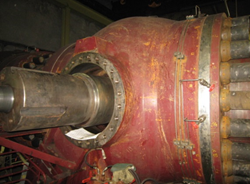
Figure 1: Spherical valve trunnion
The customer accepted to test the solution on all the power units.
- What are the inputs?
The initial input data were the following:
- Application: spherical valve trunnions (Main Inlet Valve)
- Media: raw dam water (French Alps lake water)
- Working Pressure: 12 [MPa] (corresponding to 1200 mWCe)
- Movement: +/- 90 [°] rotating - low speed
- Power plant commissioning date: 1988
- Trunnions dimensions: Ø690 [mm]
- Nominal Valve Diameter: Ø1300 [mm]
2. Sealing Issues
- Which type of failure occurred?
2 types of failure occurred:
- Leakage with seal undamaged (seal extrusion)
- Leakage with seal damaged
- How is leakage possible without any seal damage?
For an application case (pressure, speed etc….), the sealing is an equation composed of 3 parameters:
- The seal design (profile geometry)
- The seal material
- The seal housing (geometry and location)
>> Sealing = Sealdesign x Sealmaterial x SealHousing
Considering that the value of a perfect sealing is 1, as one parameter tends to 0, the sealing tends to 0.
The initial solutions did not take into account the impact of the “SealHousing” parameter.
- How did you introduce the “SealHousing” parameter to solve this trunnion sealing problem?
Trunnion is a revolution part, means the seal is circular. We design the seal considering the housing cross section.
The seal housing could undergo a changing of its own cross section value due to the application working conditions (main inlet valve). When the valve is on the closed position, the sphere is pushed on the downstream due to the water hydrostatic pressure (ex, 12 [MPa] applied on Ø1300 [mm]). The sphere trunnions move on downstream side of a significant value. There are 2 possible cases:
1- The valve body is very rigid, means no valve body strain, so the trunnions displacement is given by the radial bearing gap.
>> Housing cross section value = nominal cross section + radial gap value
2- The valve body is not so rigid, means valve body strain occurs, so the trunnions displacement is given by sum of the radial bearing gap and the bearing radial strain value.
>> Housing cross section value = nominal cross section + radial gap value
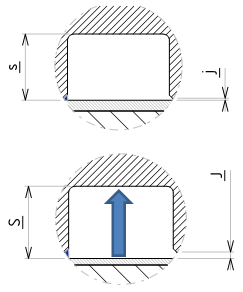
Figure 2: Housing cross section increasing after strain
In some application cases the housing cross section value could increase from 0 to 1 [mm]. This means that, for example, a section “s” of 15 [mm] cross section housing could become a “S” of 16 [mm] cross section housing due to valve strain under hydraulic pressure! This not eccentricity but strain!
The seal must be tight enough to ensure sealing at high pressure, compensating the housing cross section increasing. This parameter was not considered in the initial sealing solution. The results were only leakage and damaged seals.
3. Solutions
- How did PXL SEALS solve the issue?
The power plant was designed early the 90’s so no stress/strain calculations were done for these Main Inlet Valves. PXL SEALS considered the valve strain based on its own experience. The hypothesis was to consider that the housing cross section could increase from 0 to 1 [mm] at 12 [MPa].
PXL SEALS did the sealing concept in the following way:
- Add the “SealHousing” parameter value
- Update the seal material from NBR to custom PU
- Keep the seal type design with design updating
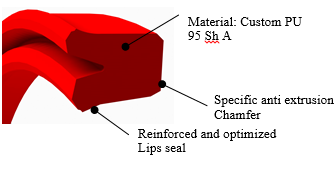
PXL SEALS required to advance FEA simulation methods in order to simulate at best the reality.

Figure 3: Seal Mounting

Figure 4: Seal pressurized at 3.3 [MPa] – no housing strain
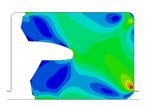
Figure 5: Seal pressurized at 12 [MPa] – housing strain = 1 [mm]
According to the customer, PXL SEALS is doing an advanced feedback:
- Valve strain under pressure measurement
- Leakage over seeing each 3 months
PXL SEALS has developed a partnership with the valve manufacture in order to develop an on-site strain measurement. The strain values will be used to validate the FEA model hypothesis.
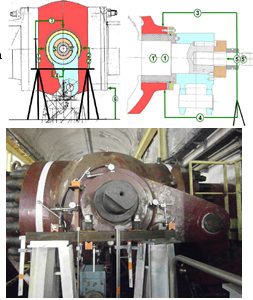
Figure 6: on-site measurement
PXL SEALS is overseeing the evolution of this new sealing solutions. When the working time will be significant; the solution will be proposed for all its customers.
- On which innovations is PXL SEALS working on for the future?
PXL SEALS is currently working on new housing geometries in improve seal performance.
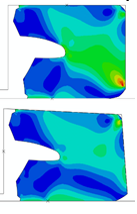
Figure 7: pictures showing the strain decreasing by modifying groove geometry
By modifying the seal groove geometry, the strain value can be significantly reduced. The “SealHousing” parameter is now completely integrated in new sealing solutions.




CATEGORIES
TAGS
ARCHIVES | Janvier | |||||
| Lun | Mar | Mer | Jeu | Ven | Sam | Dim |
| 1 | 2 | 3 | 4 | |||
| 5 | 6 | 7 | 8 | 9 | 10 | 11 |
| 12 | 13 | 14 | 15 | 16 | 17 | 18 |
| 19 | 20 | 21 | 22 | 23 | 24 | 25 |
| 26 | 27 | 28 | 29 | 30 | 31 | |










